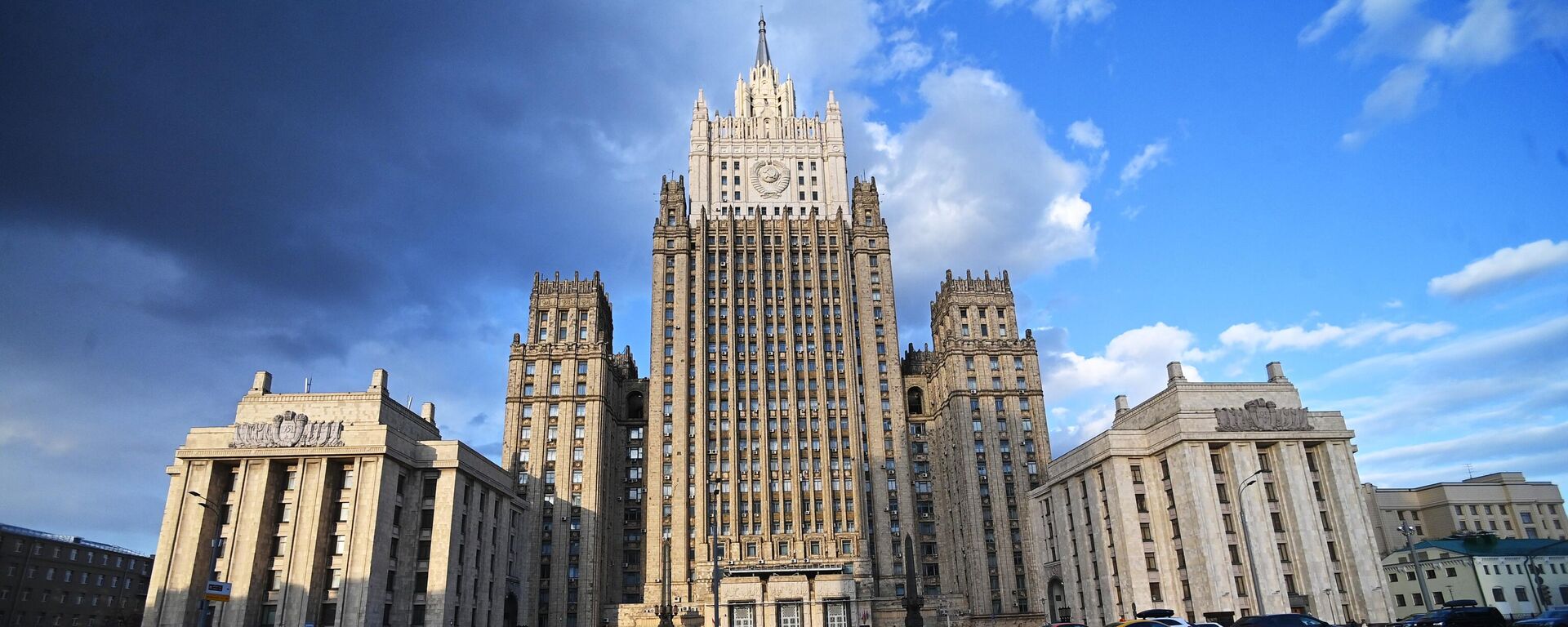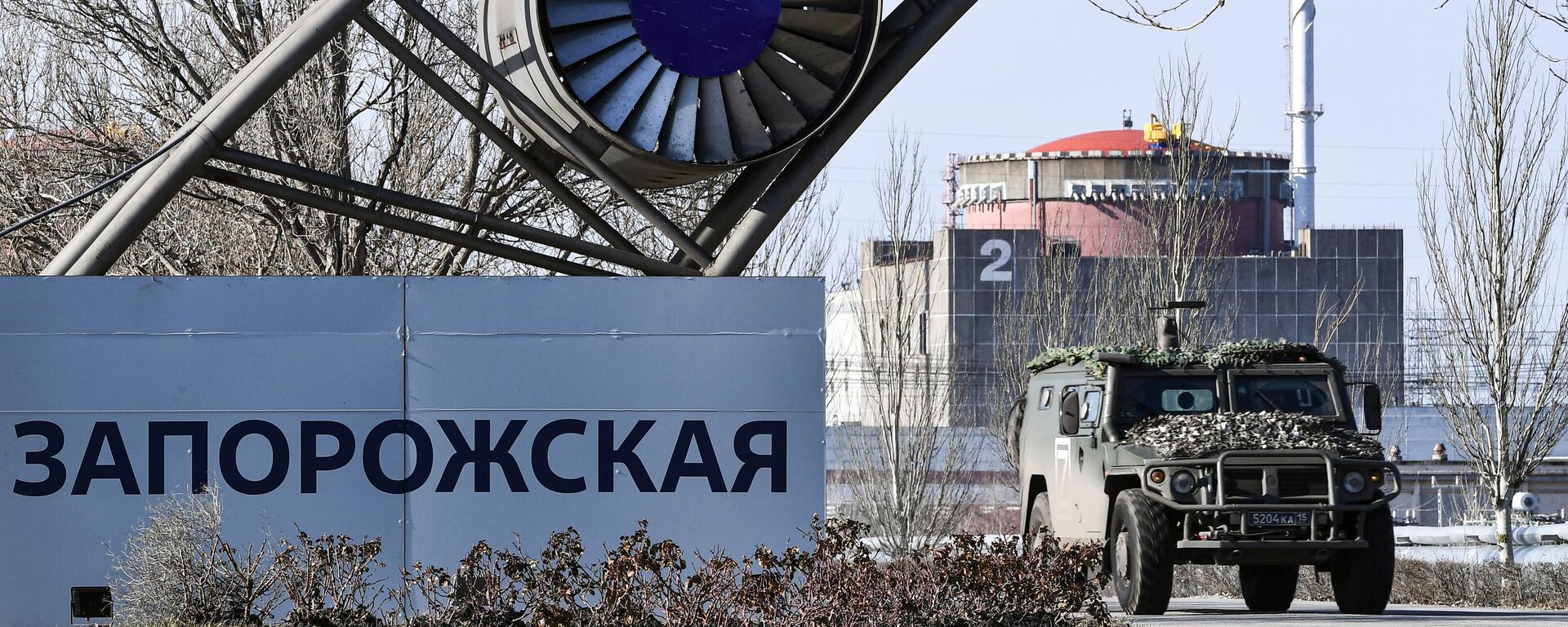https://sputnikglobe.com/20240813/plausible-deniability-how-western-media-covers-for-ukraines-nuclear-terrorism-1119743316.html
Plausible Deniability: How Western Media Covers for Ukraine’s Nuclear Terrorism
Plausible Deniability: How Western Media Covers for Ukraine’s Nuclear Terrorism
Sputnik International
The Kiev regime has engaged in a series of periodic attacks on Europe’s largest nuclear power plant for the duration of its ongoing conflict with Russia. The International Atomic Energy Agency, which continues to monitor the Zaporozhye plant, has refused to denounce Ukraine’s strikes on the sensitive facility.
2024-08-13T03:09+0000
2024-08-13T03:09+0000
2024-08-13T04:12+0000
mark sleboda
viktor orban
robert fico
ukraine
russia
international atomic energy agency (iaea)
zaporozhye
zaporozhye npp
zaporozhye region
nuclear
https://cdn1.img.sputnikglobe.com/img/07e8/08/0c/1119731636_0:49:2880:1669_1920x0_80_0_0_dea7ff53823cabee7402a1d235634260.jpg
The Kiev regime has engaged in a series of periodic attacks on Europe’s largest nuclear power plant for the duration of its ongoing conflict with Russia.Russian troops moved in to safeguard the facility shortly after the country launched its special military operation in early 2022. Moscow has taken pains to prevent damage to the plant since then, which could result in a catastrophic nuclear disaster, but Ukrainian troops have continued to launch highly provocative strikes against the facility, which is currently in a state of partial shutdown.Russia has repeatedly warned of the danger of damage to the power station, but the Kiev regime’s attacks have nonetheless continued, with Western media providing cover for Ukraine’s provocations. International relations expert Mark Sleboda joined Sputnik’s The Final Countdown program Monday to discuss the issue within the context of the ongoing proxy war against Moscow.“Considering it is the 'adults' in the West who are arming and facilitating [Zelensky], there are no real adults in the room in the Western political elite unless you want to count [Hungarian Prime Minister] Viktor Orban or [Prime Minister] Robert Fico in Slovakia,” said the security analyst, who noted that Ukraine has seen growing unrest as the population increasingly opposes its war on Russia.“About the Zaporozhye situation: what do you think happened there?” asked host Ted Rall, turning to the subject of the Zaporozhye plant, the continent’s largest nuclear power station. “The Zaporozhye plant is still under Russian control, right?”“Since Russia occupied the Zaporozhye nuclear power plant in their initial thrust in the south that meant very little to no resistance in the first month of the conflict back in 2022,” Sleboda recalled. “It has been under complete Russian control. That said, the Kiev regime has attacked the plant dozens and dozens of times, whether we're talking artillery shelling, drone attacks – the first drone attack was actually admitted to by the Kiev regime's Ministry of Defense in an online post – but also several attempted amphibious raids to seize control of it. All have more or less failed.”Sleboda noted that the International Atomic Energy Agency (IAEA), which continues to monitor the facility, has refused to denounce Ukraine’s strikes on the sensitive plant. The expert claimed the organization has faced political pressure not to blame Ukraine for “what is quite obviously Kiev regime attacks.” Meanwhile Ukraine has attempted to claim explosions documented by the IAEA at the power station were caused by car tires being set on fire.Western media typically conveys the Kiev regime’s version of events at the plant, Sleboda noted, allowing Ukraine to deny its strikes on the nuclear plant.“It's completely unbelievable, but it provides that bit of plausible deniability to keep up the propaganda line. That's clearly what it is. It's propaganda… plausible deniability is all that is needed for the Western media to whitewash and provide cover for the Kiev regime. It has nothing to do with anyone in the media actually believing this feces they're trying to shovel onto you.”
https://sputnikglobe.com/20240812/moscow-calls-on-intl-community-to-act-against-ukraine-amid-strike-on-zaporozhye-nuclear-plant-1119734759.html
https://sputnikglobe.com/20240811/ukraines-attack-breached-zaporozhye-npps-physical-integrity---znpps-spokesperson-1119727527.html
ukraine
russia
zaporozhye
zaporozhye region
Sputnik International
feedback@sputniknews.com
+74956456601
MIA „Rossiya Segodnya“
2024
John Miles
https://cdn1.img.sputnikglobe.com/img/07e8/01/19/1116388787_0:0:1316:1316_100x100_80_0_0_77e70d36afd983012b1c5d38ddb84156.jpg
John Miles
https://cdn1.img.sputnikglobe.com/img/07e8/01/19/1116388787_0:0:1316:1316_100x100_80_0_0_77e70d36afd983012b1c5d38ddb84156.jpg
News
en_EN
Sputnik International
feedback@sputniknews.com
+74956456601
MIA „Rossiya Segodnya“
Sputnik International
feedback@sputniknews.com
+74956456601
MIA „Rossiya Segodnya“
John Miles
https://cdn1.img.sputnikglobe.com/img/07e8/01/19/1116388787_0:0:1316:1316_100x100_80_0_0_77e70d36afd983012b1c5d38ddb84156.jpg
zaporozhye nuclear plant, europe biggest nuclear power station, ukraine attacks on zaporozhye, ukraine strike nuclear power plant, ukraine nuclear terrorism, zaporozhizhia, nuclear plant, nuclear terrorism, terrorist attack, ukrainian strike, dangerous escalation, nuclear threat, nuclear gamble, nuclear catastrophe
zaporozhye nuclear plant, europe biggest nuclear power station, ukraine attacks on zaporozhye, ukraine strike nuclear power plant, ukraine nuclear terrorism, zaporozhizhia, nuclear plant, nuclear terrorism, terrorist attack, ukrainian strike, dangerous escalation, nuclear threat, nuclear gamble, nuclear catastrophe
Plausible Deniability: How Western Media Covers for Ukraine’s Nuclear Terrorism
03:09 GMT 13.08.2024 (Updated: 04:12 GMT 13.08.2024) The International Atomic Energy Agency, which continues to monitor the Zaporozhye nuclear power plant, has refused to denounce Ukraine’s strikes on the sensitive facility.
The Kiev regime has engaged in a series of periodic attacks on Europe’s largest nuclear power plant for the duration of its ongoing conflict with Russia.
Russian troops moved in to safeguard the facility shortly after the country launched its special military operation in early 2022. Moscow has taken pains to prevent damage to the plant since then, which could result in a catastrophic nuclear disaster, but Ukrainian troops have continued to launch highly provocative strikes against the facility, which is currently in a state of partial shutdown.
Russia has repeatedly warned of the danger of damage to the power station, but the Kiev regime’s attacks have nonetheless continued, with
Western media providing cover for Ukraine’s provocations. International relations expert Mark Sleboda joined
Sputnik’s The Final Countdown program Monday to discuss the issue within the context of the ongoing proxy war against Moscow.
“Considering it is the 'adults' in the West who are arming and facilitating [Zelensky], there are no real adults in the room in the Western political elite unless you want to count [Hungarian Prime Minister] Viktor Orban or [Prime Minister] Robert Fico in Slovakia,” said the security analyst, who noted that Ukraine has seen growing unrest as the population increasingly opposes its war on Russia.
“There's already been one incident where a woman whose husband was forcibly conscripted set herself on fire outside of the conscription office in a Ukrainian city,” he continued. “So things are getting desperate and there are signs of dissent. There are signs of active resistance, but those have to be, shall we say, below the radar at a certain level. The Kiev regime still has large numbers of far-right Banderite fascist militants both within its military and informal brigades that help it enforce its control of the country.”
“About the Zaporozhye situation: what do you think happened there?” asked host Ted Rall, turning to the subject of the Zaporozhye plant, the continent’s largest nuclear power station. “The Zaporozhye plant is still under Russian control, right?”

12 August 2024, 10:51 GMT
“Since Russia occupied the Zaporozhye nuclear power plant in their initial thrust in the south that meant very little to no resistance in the first month of the conflict back in 2022,” Sleboda recalled. “It has been under complete Russian control. That said, the Kiev regime has attacked the plant dozens and dozens of times, whether we're talking artillery shelling, drone attacks – the first drone attack was actually admitted to by the Kiev regime's Ministry of Defense in an online post – but also several attempted amphibious raids to seize control of it. All have more or less failed.”
“On Sunday morning a Kiev regime kamikaze drone was sent in to attack and impacted on one of the two cooling towers inside the plant proper. This resulted in a fire which did some serious damage to machinery,” said the analyst. “Drone attacks on a nuclear power plant are never a good thing.”
Sleboda noted that the International Atomic Energy Agency (IAEA), which continues to monitor the facility, has refused to denounce Ukraine’s strikes on the sensitive plant. The expert claimed the organization has faced political pressure not to blame Ukraine for “what is quite obviously Kiev regime attacks.” Meanwhile Ukraine has attempted to claim explosions documented by the IAEA at the power station were caused by car tires being set on fire.
Western media typically conveys the Kiev regime’s version of events at the plant, Sleboda noted, allowing Ukraine to deny its strikes on the nuclear plant.
“The Russian side says one thing, the Kiev regime makes up a ridiculous Pinocchio story on the other side and the Western media invariably goes with the Pinocchio story because no matter how ridiculous it is, there is at least plausible deniability here and you can't really admit that the side that you are supporting in the war is openly repeatedly trying to commit acts of nuclear terrorism on European soil,” said the analyst.
“It's completely unbelievable, but it provides that bit of plausible deniability to keep up the propaganda line. That's clearly what it is. It's propaganda… plausible deniability is all that is needed for the Western media to whitewash and provide cover for the Kiev regime. It has nothing to do with anyone in the media actually believing this feces they're trying to shovel onto you.”

11 August 2024, 21:15 GMT





